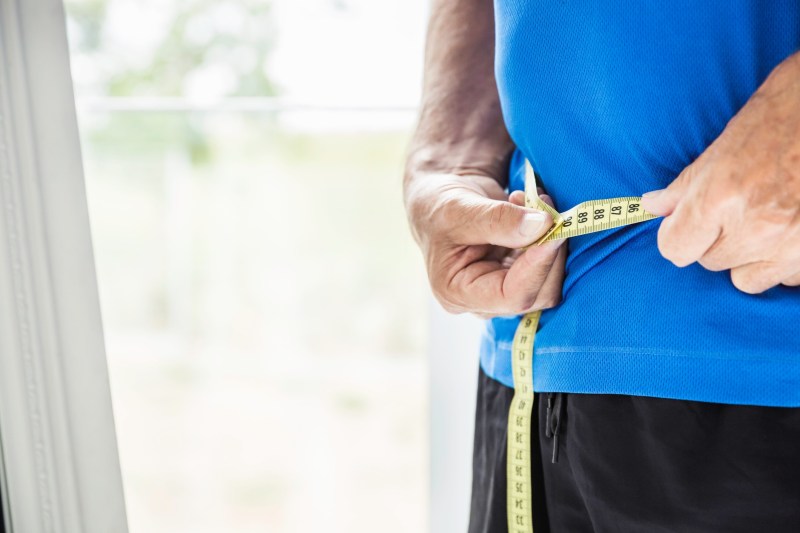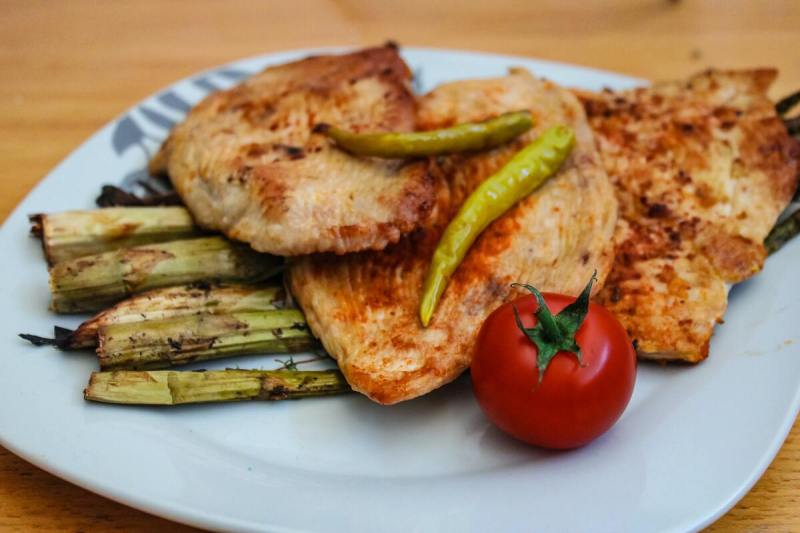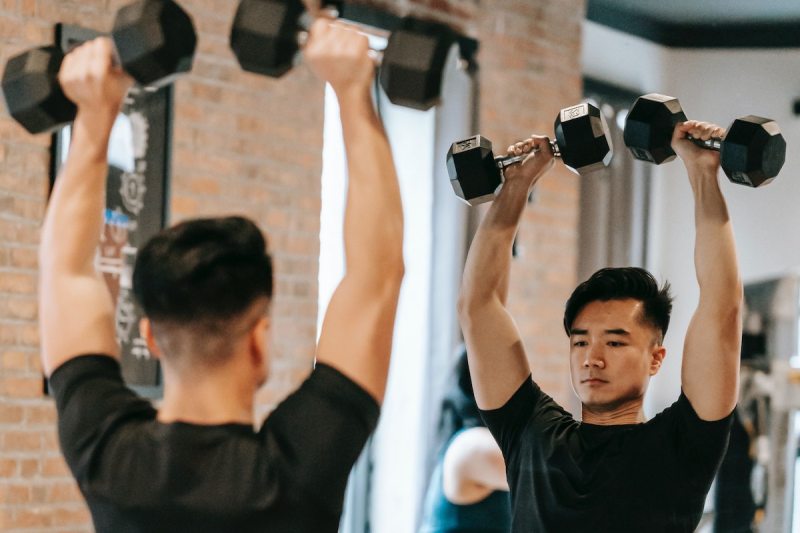
Hitting a weight loss plateau can be incredibly frustrating. If you’ve hit a plateau and are asking yourself, “Why am I not losing weight anymore?” one of the main reasons is that your body has adapted to your current diet and exercise regimen.
You’ve been diligently following that regimen, yet the scale refuses to budge. Take heart — with a few simple tweaks, you can break through that plateau and get back on track with your weight loss goals.
In this article, we’ll explore seven science-backed weight loss tips for getting your weight loss efforts back on track. If you want to discover how to lose weight the easiest way, read on.

Reduce calorie intake
One of the most common reasons people hit a weight loss plateau is because their calorie deficit has become too small. Over time, your body adapts to your current calorie intake, making it easier to maintain your weight.
Try reducing your daily calories by 100 to 200 per day to increase your deficit. This forces your body to pull from stored fat for energy, kick-starting weight loss again. Be sure not to restrict calories too severely, as overly drastic cuts can slow your metabolism.
A modest reduction of 10-20% below your maintenance level is sufficient to get the scale moving again. Pair your calorie reduction with foods high in protein, fiber, and nutrients to help you feel satisfied with fewer calories.

Increase workout intensity
Revving up the intensity of your workouts might be the best way to lose weight. High-intensity interval training (HIIT) is ideal for giving your metabolism a jolt. Aim to include one to two HIIT workouts per week, incorporating short bursts of maximum effort like sprints or fast-paced bodyweight exercises.
Strength training is another option for upping workout intensity. Challenge your muscles by progressively increasing weights for your compound lifts. Building muscle boosts your resting metabolic rate, accelerating calorie burn and fat loss.
Don’t forget about cardio. Mix in occasional high-intensity cardio like hill sprints or intervals on the rowing machine. The key is varying your workouts to continually challenge your body.

Try weekly refeeds
Cycling your calories can help break through a plateau. One effective strategy is incorporating one to two “refeed” days per week, where you increase calories closer to the maintenance level.
On refeed days, fill your plates with nutritious whole foods like lean proteins, veggies, fruits, and whole grains. Avoid going overboard on junk foods. Refeeding helps restore depleted glycogen stores, regulates hormones like leptin, and can spur fat loss by boosting your metabolic rate and thyroid function.
Just be sure refeed days are accompanied by plenty of activity like normal. Refeeds work best when embedded within an overall consistent calorie deficit.

Get in more steps
Simply moving more throughout your day can get your weight loss back on track. Set a daily step goal (10,000 per day is a good benchmark) and make an effort to hit it through activities like taking the stairs, parking farther from entrances, taking walking breaks, pacing during phone calls, etc.
Wearing a fitness tracker could help keep you accountable as well. Increasing non-exercise activity thermogenesis (NEAT) through more movement and fidgeting can burn significant calories to rekindle fat loss. Take advantage of little ways to sneak extra activity into your normal routine. Those extra calorie burns add up and contribute to plateau busting.

Increase water and fiber intake
Dehydration and constipation are common plateau culprits. Drink plenty of water daily to avoid water retention caused by dehydration. Aim for half your body weight in ounces as a minimum.
Fiber helps keep you regular and supports weight loss. Shoot for 25-30 grams daily from veggies, fruits, whole grains, nuts, and seeds. This provides bulk to make you feel full and promotes healthy digestion and elimination to prevent bloating and constipation.
Staying hydrated and avoiding constipation ensures your weight reflects true fat loss rather than water weight fluctuations.

Focus on nutrient-dense foods
Fueling your body with nutritious whole foods boosts fat burning while providing satisfying nutrition. Fill your diet with produce, lean proteins like fish and poultry, healthy fats, legumes, whole grains, and nuts.
Limit processed foods, sweets, and saturated fats, which encourage weight gain. Nutrient deficiencies can stall weight loss, so emphasizing high-quality, vitamin-rich foods combats this issue. Their fiber and protein also support satiety and metabolism. Structure meals and snacks around this healthy whole food foundation.

Cut out alcohol
Alcohol is high in “empty” calories, providing little nutrition. It’s also metabolized preferentially over other macros, pausing fat burning in its tracks.
Limit alcoholic beverages to accelerate weight loss and avoid plateauing. If you do choose to drink, keep it to one to two drinks and focus on spirits or light beer for fewer calories and carbs.
Alcohol inhibits fat oxidation, so cutting back can restart lipolysis and fat loss. Plus, alcohol lowers inhibitions, which can lead to poor food choices that set back your efforts. Slash the booze to get your diet on track.

Frequently asked questions
How do you break a plateau in weight loss?
The most effective plateau-busting techniques include reducing calorie intake slightly, upping workout intensity through HIIT or strength training, trying periodic refeeds, getting in more daily steps, increasing water and fiber consumption, focusing on whole foods, and limiting alcohol. Combining small tweaks to your diet, exercise routine, and lifestyle habits can get your fat loss back on track.
How long can a weight loss plateau last?
Weight loss plateaus typically last one to two weeks, though they may persist for a month or more. If the scale hasn’t budged after two to three weeks of attempted tweaks, consult a registered dietitian or doctor to rule out any underlying issues. With continued effort, patience, and troubleshooting, most plateaus can be overcome.
Should I eat more to break a weight loss plateau?
Strategic refeed days where you increase calories to your maintenance level can be helpful during a plateau. However, overall, reducing calories slightly is more effective than dramatically increasing food intake. Eating more provides your body extra energy, which it can store as fat rather than burn for weight loss. Keep overall calories modestly below maintenance and focus on nutrient-dense whole foods.
Will a cheat day break my plateau?
An unrestricted cheat day can easily negate a week’s worth of deficit, stalling fat loss. However, a small, planned refeed of 300 to 500 extra calories focusing on nutritious carbs may provide a metabolic boost and thyroid regulation to restart weight loss. Avoid making a cheat day an excuse for overeating. Keep it modest and commit to your regular deficit for the rest of the week.
With small, consistent changes to your routine, you can power through any plateau and reach your weight loss goals. Patience and persistence are key — stick to the strategies, and you’ll get the scale moving downward again in no time.



